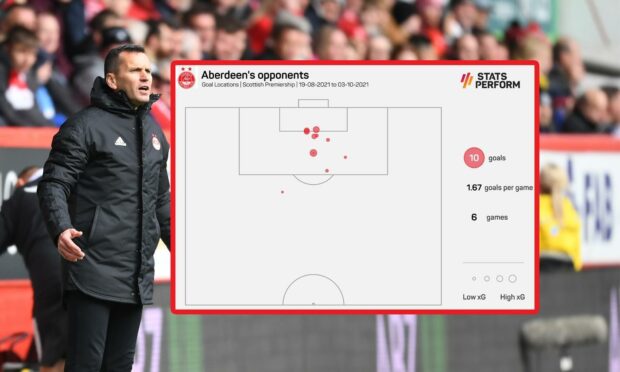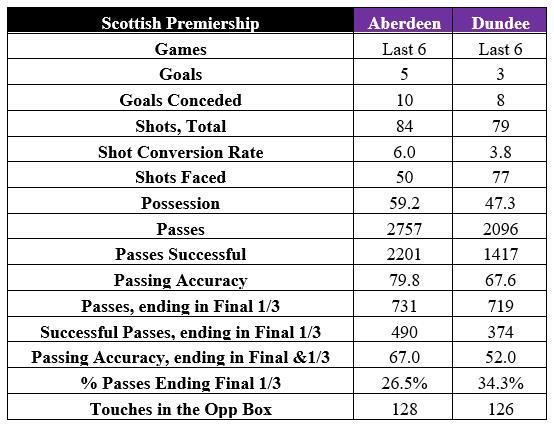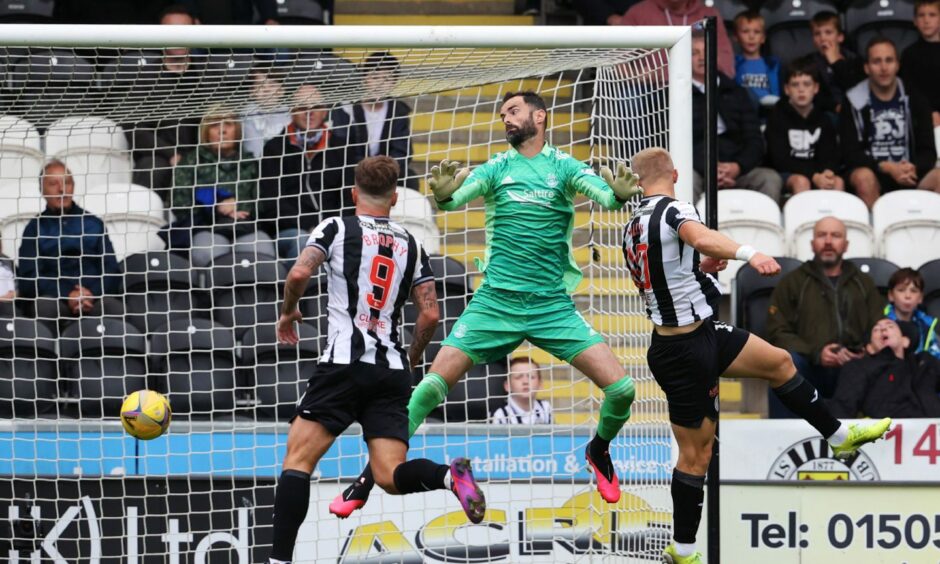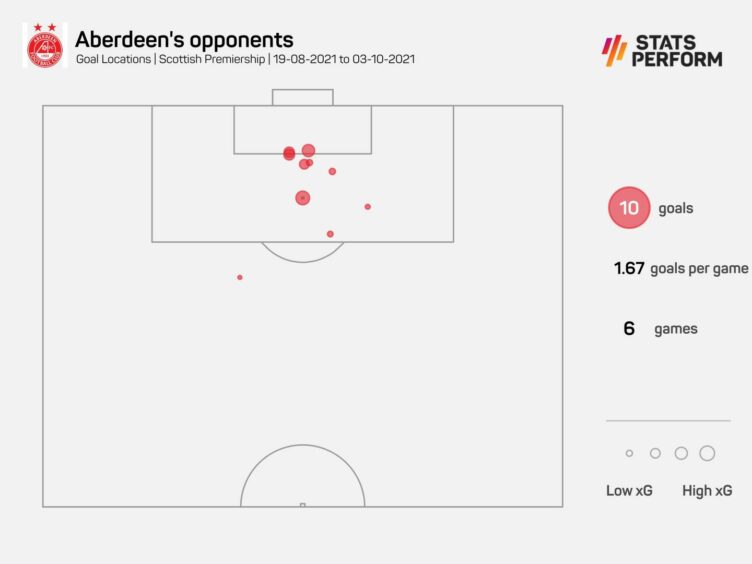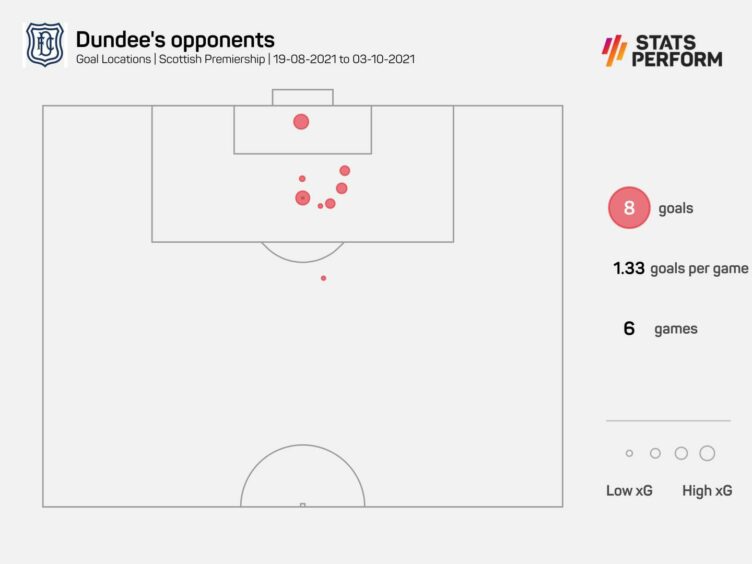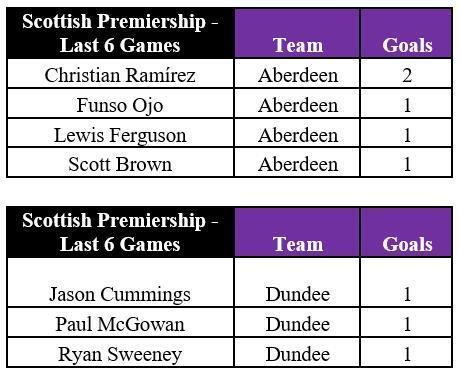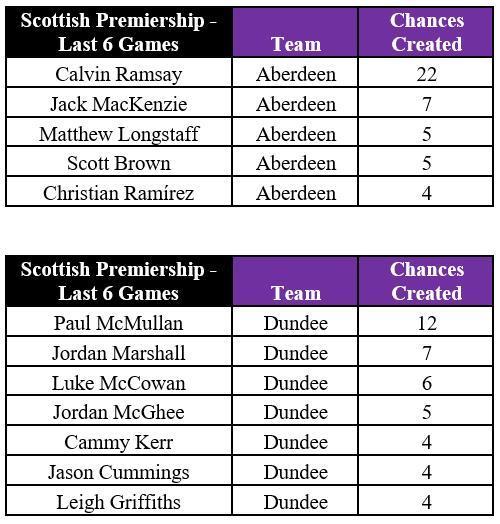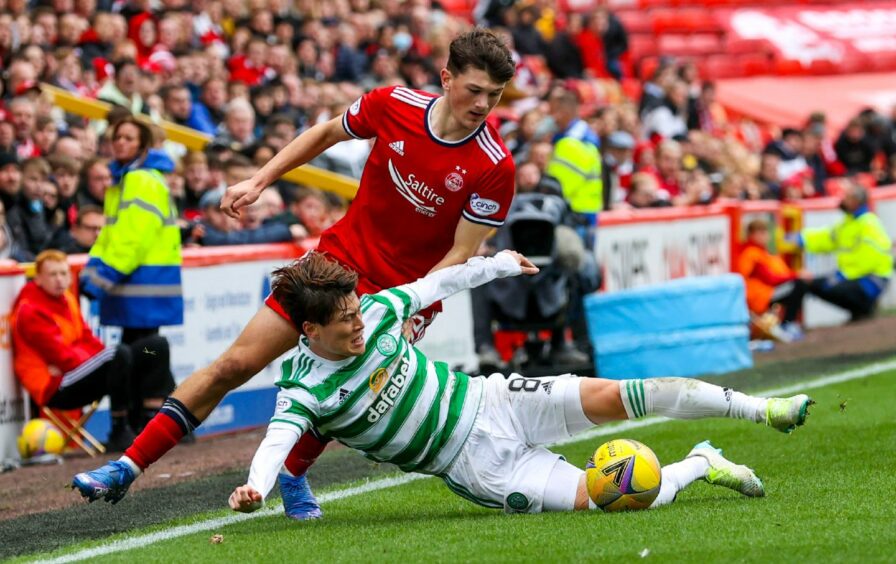Aberdeen travel to Dundee on Saturday on their return to Premiership action trying to arrest a winless run which is now nine games long. They’ll find opponents who are trying to find answers to the same questions.
While the Dons recorded victories in the first two of their eight top-flight games so far, their Dens Park counterparts are still without a win this term.
During the last six rounds of fixtures, where the Reds, too, have become unable to secure three points, in games against Hearts (draw), Ross County (draw), Motherwell (loss), St Johnstone (loss), St Mirren (loss) then Celtic (loss), they have joined the Dees in the bottom half of the league table.
Over those last six matches, the sides’ stats have been remarkably similar. Both have two draws and four losses for starters, but it goes deeper…
While Stephen Glass’s Aberdeen have scored two more goals (5 v 3) than James McPake’s men in dark blue, they’ve also conceded two more (10 v 8).
The difference in their shots taken is marginal, with Aberdeen’s 84 attempts on goal only slightly more than Dundee’s 79.
An interesting number which perhaps reflects the individual errors which have characterised the Dons’ defensive struggles so far this season is the 10 goals they’ve let in have come from just 50 opposition efforts.
Dundee’s opponents have managed far more attempts on goal, with 77, but McPake’s men have only let in eight.
You’d probably expect Dundee to have faced more shots given they have had less possession, less passes, less successful passes and less accurate passing than the Reds, but they have held up reasonably well against the higher volume of shots against compared to how Aberdeen have fared.
The expected goals against (xGA) metric tells a similar story. Aberdeen should’ve conceded 7.41 goals in their last six, according to Opta, but their well-publicised defensive issues have seen them let in 10 – a significant underperformance.
Dundee, meanwhile, had a lower xGA of 7.26, which they were near enough aligned with in allowing their net to be breached eight times.
One accusation which has been thrown at both Aberdeen and Dundee in recent weeks, is they’ve guilty of moments of calamitous defending in their own boxes, but also they’ve been low on cutting edge in attack.
Given Aberdeen’s better possession stats over the last six games (67% to Dundee’s 47.3%) and 2,201 successful passes to Dundee’s 1,417, it is surprising Glass’ Dons have only managed 128 touches in the opposition box to Dundee’s 126.
It would appear the Reds’ cutting edge problem, and getting the ball in and around the opposition goal, may have also been worse than their weekend opponents in recent weeks.
Dangermen
Neither Aberdeen nor Dundee have had a stand-out goalscorer over the last six rounds of Premiership fixtures.
US striker Christian Ramirez is the only player in either camp to have netted more than once.
However, when it come to chances created there is a difference between the sides.
Glass’ team are relying on young full-backs Calvin Ramsay and Jack MacKenzie at the moment – with the likes of Ryan Hedges only featuring in fits and starts – to supply the ammunition, with Ramsay managing 22 chances created over the last six.
While Dundee haven’t had a creator of Ramsay’s potency during the last period, it’s clear their creators are in a different area of the pitch.
Striker Paul McMullan has been McPake’s most influential attacking player, with left winger Jordan Marshall also heavily involved in making opportunities for team-mates.
Dens a happy hunting ground for Aberdeen
Aberdeen’s relative stability in recent seasons compared to Dundee means, for what it’s worth (and it’s not much, given it’s a completely revamped squad of Reds players), they’ve got a great record at Dens Park.
The Dons have won their last six in the league there, recording four clean sheets.
In fact, the hosts are winless at home in their last 15 home Premiership games – all the way back to their top-flight relegation season in 2018/19.
